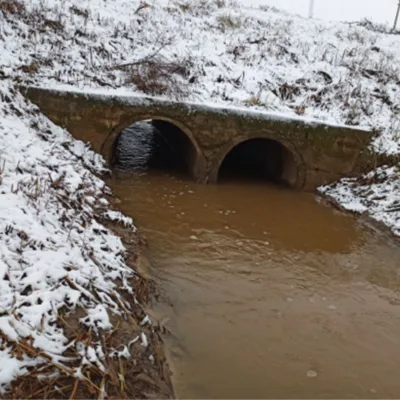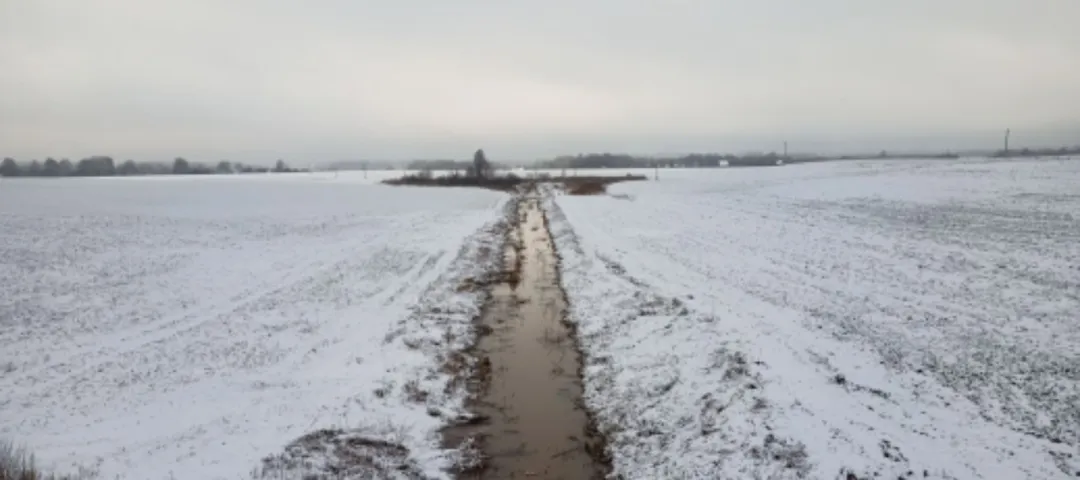General information
RDP Priority
- P2. Competitiveness
RDP Focus Area
- 2A: Farm’s performance, restructuring & modernisation
RDP Measure
- M04: Investments in physical assets
Beneficiary type
- Local / regional authority
Summary
The drainage structures managed by the Kaišiadorys District Municipality Administration had severely deteriorated due to weather conditions and a lack of maintenance. The ditches were overgrown with shrubs, and sediment accumulation ranged from 20 to 40 cm in depth. Additionally, the drainage outlets were obstructed by grass, damaged, and failed to meet the required standards.
The culverts were also blocked with sediment, their reinforcements were damaged, and the end caps were cracked. Some culverts had an insufficient diameter, while many ditch markers were broken. Overall, these drainage structures had deteriorated by more than 45%, making restoration essential to improve their functionality and enhance the competitiveness of surrounding farms.
Results
- The project successfully restored 26.94 km of ditches and reconstructed 30 culverts.
- A total of 724 individuals, including agricultural entities and rural residents, benefited from these restoration works.

Promoter
Kaišiadorys District Municipality Administration
Funding
Total budget: 374 000 (EUR)
EAFRD: 248 200 (EUR)
National/Regional: 43 800 (EUR)
Private/own: 82 000 (EUR)
Ressourcen
Links
Context
Kaišiadorys District Municipality Administration is managing the state-owned drainage structures under the right of use. Due to the existing natural conditions and lack of maintenance of the drainage structures, the existing ditches were neglected and no longer performed their primary function of draining water from the drainage systems. The ditches were overgrown with shrubs and sediment, with depths ranging from 20 to 40 cm. Furthermore, the drainage outlets were overgrown with grass, damaged, and did not meet the required standards. The culverts were blocked with sediment, reinforcements were damaged, the end caps were cracked, some were of too small a diameter, ditch markers were broken, etc. Overall, these drainage structures had deteriorated by more than 45%.
Objectives
The project aimed to increase the competitiveness of all agricultural activities in the area by restoring the drainage infrastructure, which is functionally interconnected and necessary for agriculture.
Activities
Project activities included:
- Preparatory Stage - Assessing and identifying the land reclamation structures in the worst technical condition; determining the technical indicators of the necessary reconstruction works and related services; interviewing potential suppliers and determining the funds required for project financing; making the necessary decisions on the provision of project financing; preparing the application for support.
- Implementation Stage I - This stage mainly involved carrying out the procurement of services necessary for the preparation of the technical and implementation documentation of the project; preparing and coordinating the technical documentation of the project in accordance with all applicable legal acts.
- Implementation Stage II - This stage mainly involved carrying out the procurement for the reconstruction works, and related services; carrying out the actual works provided for in the technical work design.
- Completion Stage - The main tasks of this stage were: preparing the documentation for the completion of the project which included the implementation of reconstruction works and delivering related services; and coordinating the completion of documentation with interested institutions and persons.
Main results
- Upon completion of the project, 26.94 km of ditches and 30 culverts were reconstructed and environmental measures were implemented (installing stacked layers of natural stones and setting up biological water treatment for agricultural drainage).
- The public-use drainage system was improved on a 1 338-ha land area.
- The project benefited 724 individuals, including agricultural entities and rural residents.
Key lessons
- When this project began implementation, the project holders were sceptical of the planned environmental measures in the existing sections of regulated drainage ditches. After implementing the aforementioned works, they noticed that at the locations of the environmental measures, the technical works blended in very well with the natural ditch bed, and no flooding, which would have been expected before the project was completed, occurred. Perhaps, when planning this project, it would have been useful to consider other types of environmental measures, but, unfortunately, the municipality was not familiar with real examples. It was difficult to decide what would be beneficial and would not harm the direct function of the drainage structures. After implementing this project, the project holders became convinced that the application of environmental measures in the existing sections of regulated drainage ditches created added value from both an environmental and agrarian point of view, and improved the condition of the existing drainage infrastructure.
Veronika Jacevičienė

